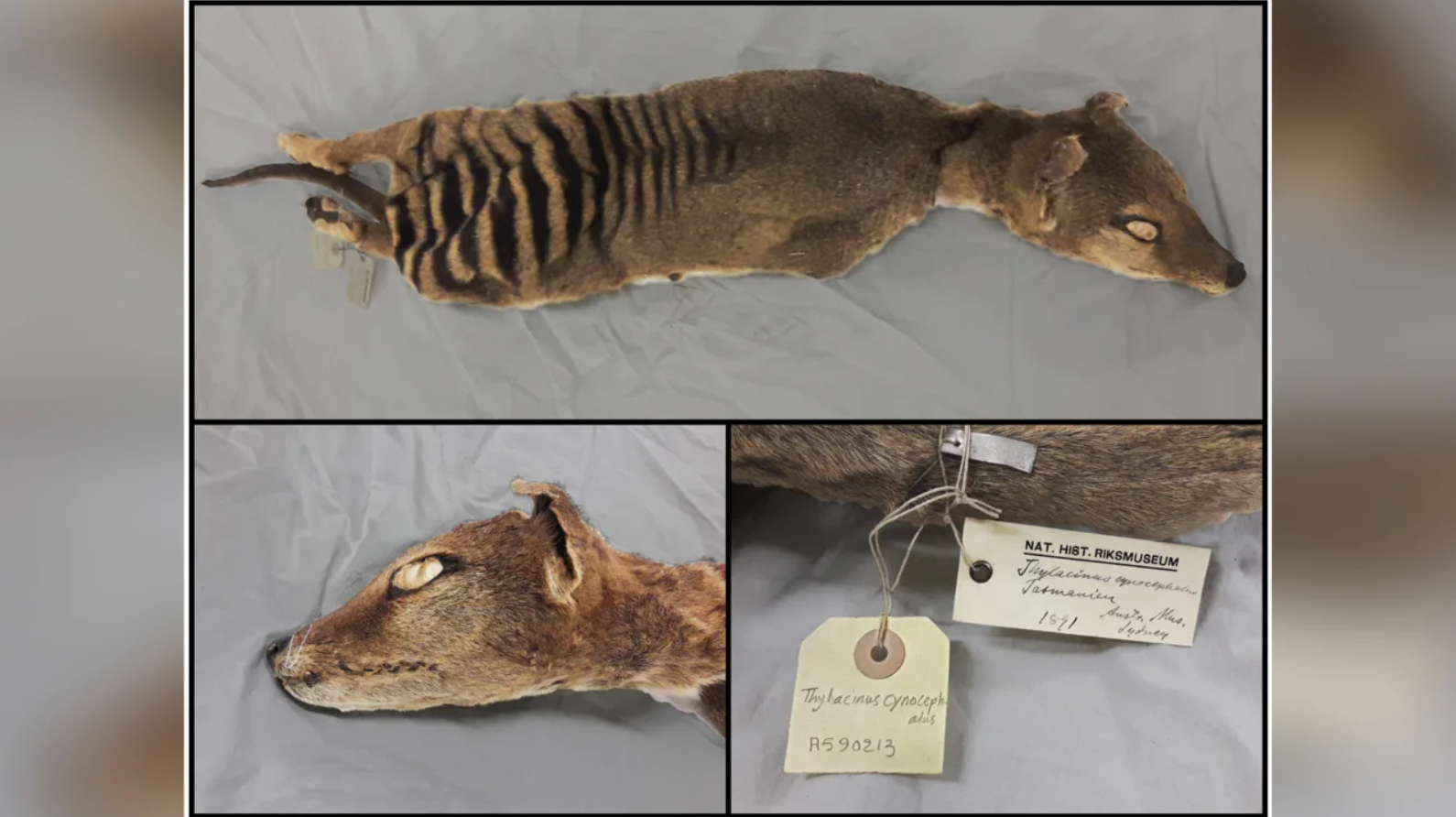
©Emilio Mármol Sánchez
Pre-reading questions:
- What do you think a Tasmanian tiger might look like?
- Where do you think it lived?
Vocabulary:
- preserve /pri-ZURV/
- detailed /dih-TEYLD/
- genetic /juh-NET-ik /
- breakthrough /BREYK-throo/
- researcher /REE-sr-chr/
[verb] – to keep something as it is, especially in order to prevent it from decaying or being damaged or destroyed
The agreement preserved our right to limit trade in endangered species.
[adjective] – giving a lot of information with many details
He kept a detailed account of the suspect’s movements.
[noun] – the genetic makeup, traits, and inheritance patterns
I’m giving a seminar on the latest developments in genetic research next week.
[noun] – an important discovery or event that helps to improve a situation or provide an answer to a problem
A major breakthrough in negotiations has been achieved.
[noun] – someone who studies a subject, especially in order to discover new information or reach a new understanding
This book is an indispensable resource for researchers.
Article reading:
Recent breakthroughs defy the notion that only DNA endures in ancient samples. Extracting fragile RNA from the Tasmanian tiger, which deteriorates faster than DNA, opens avenues to study RNA in extinct animals like the woolly mammoth. By sequencing RNA from the specimen’s tissues and identifying thylacine-specific genes, the researchers unveil novel ways to understand the animal’s biology in unprecedented detail. In essence, RNA offers a closer examination of an extinct species’ metabolism and biology, akin to exploring recipes in a cookbook, enhancing our traditional DNA-based knowledge.
Comprehension questions
- How significant is the discovery of extracting and decoding RNA from an extinct Tasmanian tiger specimen, and what potential applications does it hold for scientific research?
- What challenges did the researchers face in preserving the Tasmanian tiger specimen for 130 years, and how did this preservation enable the groundbreaking RNA extraction?
- How might the newfound insights into thylacine genetics contribute to de-extinction efforts, and what are the ethical considerations surrounding such endeavors?
- In what ways do recent breakthroughs in studying ancient samples, such as extracting RNA, challenge our previous understanding of genetic research?
- Can you provide examples of other extinct species where the extraction of RNA could offer valuable insights into their biology and evolution, as mentioned in the article?
Discussion questions
- Have you ever encountered a topic in science or history that fascinated you and made you want to learn more, like the discovery of RNA in the Tasmanian tiger? If yes, what was it, and how did it spark your interest? If not, can you think of a subject or discovery that might ignite your curiosity?
- The article mentions the potential to apply this discovery to de-extinction efforts. Can you envision a world where extinct species like the Tasmanian tiger could be brought back to life through scientific advancements? How do you think this would impact our ecosystems and biodiversity?
- Based on the information in the article, do you believe the discovery of RNA in the Tasmanian tiger is a significant advancement in scientific research?
- What are the potential ethical dilemmas and challenges that could arise from using genetic research, like the extraction of RNA from extinct animals, for purposes such as de-extinction or other applications? How should society navigate these ethical considerations?
- The article mentions that RNA provides a closer look at an extinct species’ metabolism and biology. How might this detailed understanding of extinct species benefit fields other than biology, such as environmental conservation or medical research? Can you think of any potential applications beyond the scope of the article?